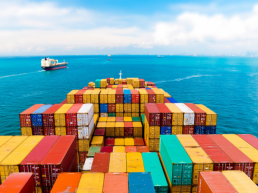
Both Liliana and Kamola work in the Agri Unit at the United Nations Economic Commission for Europe (UNECE). Liliana serves as the Head of the Agri Unit.
“Food loss and waste also squander natural resources –water, soil and energy, not to mention human labor and time. It worsens climate change, given the significant role of agriculture in generating greenhouse gas emissions,” added Mr. Guterres, encouraging collaboration across sectors –public and private.
Stepping up for the planet is therefore not only a duty but requires concrete urgent action to tackle questions such as: What if we could eat all the food that is grown but it never reaches the consumer because it disappears from the supply chain between the farm and the shop? What if we could use the significant economic, natural and human resources wasted on growing the “invisible” food lost along the supply chain? And what if we could measure and quantify these losses and identify the critical loss points, i.e., “hotspots”? These and many other questions led the United Nations Economic Commission for Europe (UNECE) to design FeedUP@UN, an innovative digital platform that measures food loss and helps redistribute the currently lost invisible food.
Food loss and waste refer to the food that is never harvested; food that is discarded before it even travels to distribution centers; and food that is removed from supermarket shelves before anyone can buy it[1]. It occurs much earlier than a salad tossed away by the consumer, or an apple not sold in the supermarket. The food lost as a result of poor agricultural practices disrupted food supply chains, overproduction and inadequate storage or transport remains largely invisible. It is the nut not marketed because it had too many spots or scuffs, or the mango wrongly transported and stored. This represents a massive burden on the environment and our natural resources.
According to the Food and Agriculture Organization of the United Nations (FAO), the estimated gross value of global (primary) agricultural production is over $5 trillion annually. One third of food produced for human consumption –around 1.6 billion tons (Boston Consulting Group)– is lost or wasted every single year. According to the FAO, nearly 14% of the world’s food is already lost between production and the retail level and these numbers can be doubled in certain regions. The share of greenhouse gas (GHG) emissions caused by food produced but never consumed is currently estimated by the FAO at 8% and continues to grow.
The lack of precise, systematic and reliable data on food loss and waste has been a challenge over the past decades for policy makers and businesses alike, and it might be one of the reasons for the absence of strong reduction drives. In the meantime, 820 million people are undernourished or hungry, the world population is growing, and the disruption of global food systems during the COVID-19 pandemic widened the gap between overproduction, food loss and malnourished populations. There is enough food for everyone –but we need to change our way of doing things. Stepping up for food loss prevention, transforming the production and consumption patterns and keeping as much food as possible in the human consumption chain is one solution and has been on top of UNECE’s agenda since 2013. UNECE has already developed a simple food loss and waste measuring methodology, a Code of Good Practice to reduce fresh food losses, launched the #saveinvisiblefood campaign and during the past 2 years designed and launched FeedUP@UN.
The vision of FeedUP@UN is to develop a strong ecosystem for inclusive and sustainable food production and consumption with enough food for everyone. The mission of FeedUP@ UN is to reload food lost and waste for a sustainable future by bringing all relevant stakeholders together towards re-imagining our entire food system. Its goal is to make invisible food available, and to ensure universal access to nutritious and healthy food by managing food loss, waste and surplus food.
FeedUP@UN is the first blockchain-powered solution that identifies, quantifies, and traces the invisible food. Integrated with commercial or food bank marketplaces, it also allows for the surplus food to be re-distributed. Its analytical features help assess, prevent and address food loss in supply chains, enhance strategic planning, improve efficiencies, reduce financial losses and create new opportunities.
Collecting real-time accurate data on where food disappears from the supply chain, FeedUP@UN integrates with online marketplaces in order to redistribute otherwise discarded food for upcycling (drying, juicing or processing) or to foodbanks. This allows for the re-valorizing of potential losses by linking supply with demand, it also allows for innovative diversification of product development and access or expansion of new market segments that could even unlock potential support from public funding instruments.
FeedUP@UN also offers an opportunity for governments and businesses to demonstrate Sustainable Development Goals progress as well as showcase social impact and corporate responsibility.
Public-private partnerships like FeedUP@UN will help to bridge those gaps while contributing to improved food loss data, enhanced sustainability and a reduced environmental footprint.
References
[1] Food and Agriculture Organization of the United Nations (FAO)
